- Home
- Deborah Harkness
The World of All Souls Page 10
The World of All Souls Read online
Page 10
Family and romantic relationships: Daughter of Stephen Proctor and Rebecca Bishop; blood-sworn daughter of vampire Philippe de Clermont; lover and wife of vampire Matthew Clairmont; and mother to twins, the Bright Borns Rebecca and Philip Bishop-Clairmont.
Personal history: Diana is a conundrum. Not even she understands who she is or why she behaves as she does. In a secretive subculture, she is the ultimate mystery.
Diana was born, a caulbearer, on the feast day of the goddess who is her namesake. Her parents were both witches. Through her mother Diana is the last direct descendant of Bridget Bishop, who was executed in Salem in 1692. (Like most witches, Bishops keep their name after marriage.) Given her ancestor’s fate, it’s not surprising that Diana was reluctant to be involved in the family business. What was surprising was that Diana seemed to have inherited none of her mother’s magical talent. Tests undertaken by the Congregation when Diana was a small child confirmed that she showed no magical promise. In fact, Diana’s parents had deliberately spellbound her to hide her magical abilities. They knew her powers were so great that young Diana would be in danger from the Congregation and other power-seeking witches. They also knew that they would not be around to protect her.
When Diana was seven, her parents were murdered while doing anthropological fieldwork in Africa. Diana went to live in Madison, New York, with her aunts, Sarah and Emily. They were very kind, but Diana was traumatized by her parents’ death and withdrew from other witches because of her lack of magical abilities and from humans because she believed they had killed her parents. As she grew older, she clashed frequently with her Aunt Sarah, a gifted practitioner of witchcraft who couldn’t understand Diana’s rejection of magic. As a defense Diana pinned her sense of self-worth on her intelligence and took refuge in her studies—especially science, which she saw as the rational alternative to magic. She skipped her final year of high school, graduated from Bates College with honors, and went straight to New College, Oxford, for her D.Phil. At Oxford, Diana wrote a thesis on the chemistry of Robert Boyle, demonstrating how the new chemistry triumphed over the old science of alchemy in the race for intellectual acceptance.
With her scholarly credentials in place, Diana focused on conquering the academic world. She won a coveted teaching position at Yale University and was awarded early tenure. She continued to work on the growth of scientific culture in the seventeenth century, with a focus on the development of chemistry and laboratory culture. Her well-ordered life now appeared safe from the dangers of being a witch in a largely human world. But this seeming safety came at a high cost—the sublimation of her true self. Diana is not even entirely successful at that, since humans sense that she is something different and rare.
Diana was still an isolated figure when she went to Oxford on sabbatical. Her one good friend was Chris Roberts. The stress of passing as human caused a great deal of anxiety, so Diana relied on strenuous physical activity to relieve her high levels of adrenaline. Constant exercise—rowing on the river, running, practicing yoga, riding horses—provided a respite from the mental effort required to maintain control. Only when she was in motion did she feel truly free.
Because Diana couldn’t be honest with other creatures, she had had few real relationships. Whenever someone developed an attachment to her—and it did happen now and again—she ran. Matthew was the first exception to this rule, and it was through the increasing honesty between them that Diana began to discover who she truly is. Ultimately it was not Matthew who made this possible but the process of letting go of her secrets. Matthew, too, came to accept his flawed self in the context of his relationship with Diana.
Diana always knew she had a touch of magical talent, though she preferred to dismiss it. As a teenager she always picked up the phone a good minute before it rang, and when she was angry, the chairs in the house piled up into a precarious pyramid, crashing back to the floor once her mood had lifted. Because she could never control her magic as other witches could, she viewed these manifestations of power as an embarrassment. Diana has learned, however, that she is not simply a witch but a weaver—a rare survivor of the ancient lineage of spellmakers who were deliberately killed off in the Middle Ages. With this understanding she is finally able to respect and make use of her special talents.
Diana is a fascinating blend of weaknesses and strengths. At times she is subject to paralyzing fear; for example, the first time she met Matthew, she instinctively ran in panic. When someone she loves is threatened, however, she can be brave to the point of recklessness. Diana emerges as the ultimate warrior, the one upon whom others rely to keep a cool head. Philippe recognized this when he gave her this advice: “Think—and stay alive.” Because all her attention is focused on hiding, Diana pays too little attention to her environment and tends to walk into lampposts, walls, and other creatures. When she relies solely on instinct to guide her, on the other hand, she can walk or row unerringly with her eyes closed. Thanks to her faith in rationality, Diana has an irritating belief that she is always right and that her intellect can get her out of any jam. But in sixteenth-century London, she had to acknowledge that in matters of magic she had much to learn. As Goody Alsop told her, “You are a weaver and must learn to control your power,” something Diana did not know much about. It is only when she embraces the intuitive, instinctive side of herself that she realizes her true power.
For those readers wondering if Diana will become a vampire, the answer is no. Diana is now happy being a witch. Also, Matthew loves her as she is and wouldn’t want her to change.
PHILIP BISHOP-CLAIRMONT
Full name: Philip Michael Addison Sorley Bishop-Clairmont
Origin of name: Philip is for Philippe, the baby’s paternal grandfather; Michael comes from the de Clermont tradition of bestowing the name of an archangel on members of Matthew’s family; Addison is the middle name of the baby’s maternal grandfather, Stephen Proctor; and Sorley is one of Gallowglass’s names.
Date of birth: November 22, 2010
Astrological sign: Sagittarius
Physical description: Reddish-blond hair, blue eyes, taller and bigger than his twin sister
Family and romantic relationships: Son of Matthew Clairmont and Diana Bishop and twin brother of Rebecca Bishop-Clairmont.
Personal history: Philip is one of the Bright Born, the offspring of both a vampire and a witch. He is content to remain quiet and observe his surroundings, like his father, but like his mother he has a great deal of potential for magic.
REBECCA BISHOP
Rebecca was daughter of Bridget Bishop by her first marriage and half sister to Christian Oliver. She was an ancestor of Joanna, Rebecca, Sarah, and Diana Bishop. Born in England around the year 1650, she came to the American colonies with her mother. After Bridget Bishop’s execution for witchcraft in 1692, Rebecca took her mother’s surname, starting a proud tradition among Bishop witches.
REBECCA BISHOP
Origin of name: Rebecca means “snare,” “noose,” “tied up,” “secured,” and even “beautifully ensnaring.”
Date of birth: September 4, 1948
Astrological sign: Virgo
Physical description: Average height, strawberry-blond hair, blue eyes. Her greatest feature was her smile, which was wide and genuine. Her style guru was Annie Hall, and she favored thrift-store finds, men’s jackets, and baggy trousers.
A member of: Harvard University faculty
Family and romantic relationships: Married to Stephen Proctor and mother of Diana Bishop. She and her sister, Sarah Bishop, are from a long line of Bishops, through their mother, Joanna Bishop.
Personal history: Rebecca Bishop was the most talented witch of her generation. Great things were anticipated of her, as she showed abilities for spellcasting and a sense of premonition that were extraordinary for a teenage witch. Rebecca beat Peter Knox in a Congregation competition set up to identify the next generation of
the magical elite. The Bishops were proud of her potential, and other American witches predicted that the Bishop lineage was about to shine as it hadn’t since Salem.
But Rebecca seemed to throw away her magical promise on a career as an anthropologist and a romance with an underachieving wizard. While pursuing a graduate degree in anthropology from Harvard University, she fell in love with a more senior graduate student, Stephen Proctor. The two married and went on to acquire teaching positions at area schools—Rebecca at Harvard and Stephen at Wellesley. Soon after their marriage, Rebecca became pregnant with their first, and only, child: Diana.
Rebecca was a highly intelligent woman and a talented practitioner of both white magic and the higher, darker magics. No one is quite sure what level Rebecca reached in her proficiency in the darker magics; like her daughter, Rebecca was adept at keeping secrets. Tragically, Rebecca died in Nigeria with her husband in 1983, leaving Diana an orphan in the care of Sarah Bishop.
REBECCA BISHOP-CLAIRMONT
Full name: Rebecca Arielle Emily Marthe Bishop-Clairmont
Origin of name: Rebecca is for the baby’s maternal grandmother; Arielle comes from the de Clermont tradition of bestowing the name of an archangel on members of Matthew’s family; Emily is for Rebecca’s other grandparent, Emily Mather; and Marthe is for Ysabeau’s servant, who played an important role in Rebecca’s conception and birth.
Date of birth: November 21, 2010
Astrological sign: Scorpio
Physical description: Jet-black hair, brilliant gray-green eyes, milky skin
Family and romantic relationships: Daughter of Matthew Clairmont and Diana Bishop and twin sister of Philip Bishop-Clairmont.
Personal history: Rebecca is one of the Bright Born, the offspring of both a vampire and a witch. She requires not only milk but blood to thrive and is restless and curious, like her mother.
SARAH BISHOP
Origin of name: Sarah means “lady” or “princess” in Hebrew. Sarah was Abraham’s wife in the Old Testament, and her name was originally Sarai (“quarrelsome”), but God later changed it. In this case the original meaning seems more apt.
Date of birth: May 7, 1950
Astrological sign: Taurus
Physical description: Sarah is of average height, more than a little plump, with wild red hair.
A member of: The Madison coven, the Conventicle
Family and romantic relationships: Aunt to Diana Bishop through her sister, Rebecca Bishop. Her partner was witch Emily Mather.
Personal history: Sarah Bishop is a worthy descendant of the sharp-tongued Bridget Bishop. Sarah always says exactly what’s on her mind, the consequences be damned. She has been the overlooked Bishop witch because her elder sister, Rebecca, exhibited far greater talent. Nevertheless, Sarah is proud to be a Bishop and conscious of her position in the witch world because of her name and lineage. She finds her niece intensely irritating, because Diana seemed intent on denying the family legacy of which Sarah is so proud. Outside her circle of fellow witches, Sarah has a healthy mistrust of other creatures, especially vampires, whom she considers well below cats on the evolutionary scale. (Sarah’s constant companion is her gray cat, Tabitha, a superior feline who believes she is the head of the household.)
Sarah is an expert in the craft, with encyclopedic knowledge of herbs and the healing arts. She has almost no elemental talents. She despaired of Diana’s magical abilities because Diana had never been successful in implementing the spells Sarah gave her. Sarah is a by-the-book sort of witch, whereas Diana is almost entirely intuitive. Sarah’s prized possession is the Bishop grimoire.
Over the years Sarah has held a number of jobs for a short period of time. Office work doesn’t really suit her; she gives too much unsolicited advice at the till to work retail; and her people skills (or lack thereof) rule out a customer-service job. Sarah makes a living these days peddling herbal and magical cures to the creatures of Madison County—including the humans. She is also a trained midwife and officiates at traditional births in the area. Sarah revels in her reputation as the town witch and eccentric and believes that this, too, is part of the Bishop legacy.
Sarah’s partner, Emily Mather, was Rebecca Bishop’s best friend. Sarah and Emily met and fell in love soon after Rebecca’s and Stephen’s deaths, when Emily moved to Madison to watch over Diana. Emily’s tragic death at the hands of Peter Knox and Gerbert d’Aurillac devastated Sarah, who must now learn to live without her. The Bishop-Clairmonts help to occupy her time—especially seeing to the needs of boisterous twin babies.
JACK BLACKFRIARS
Origin of name: Blackfriars is the area of London where Jack is from.
Date of birth: c. 1583
Astrological birth sign: Unknown
Date of rebirth: August 8, 1603
Astrological rebirth sign: Leo
Physical description: Jack was a scrawny, underfed street boy. On his rebirth he was about twenty years old, six feet tall, with a rangy frame. His eyes are golden brown, with gold and leafy-green flecks, and his smile lifts slightly higher to the left corner.
A member of: Bishop-Clairmont scion, Andrew Hubbard’s London gang
Family and romantic relationships: An orphan adopted by Diana and Matthew in 1590. Jack’s vampire sire is Father Hubbard; his grandsire is Benjamin Fox. When the Bishop-Clairmont scion was formed, he finally found his family again and was named godfather to Philip Bishop-Clairmont.
Personal history: Jack is a troubled, loving, artistic, and intense boy and the treasured adopted son of Diana and Matthew. He was a skin-and-bones urchin surviving through thievery on the streets of Blackfriars when they rescued him. He can remember clearly the victory celebrations around the defeat of the Spanish Armada in 1588 and so estimates he was born roughly five years before that. The hardship and violence Jack suffered in his earliest years gave him terrible nightmares as a boy. Matthew encouraged him to exorcise his fears through drawing. Despite these nightly terrors, however, Jack was also mischievous and enthusiastic. To keep him out of trouble, Diana arranged for Master William Shakespeare to tutor him, along with the young witch Annie Undercroft.
Andrew Hubbard took on the role of guardian for Jack and Annie after Diana and Matthew’s departure from sixteenth-century London. Diana had made Hubbard promise to look after them. When plague hit London in the early seventeenth century and Annie fell victim, it looked as if Jack would follow. But Father Hubbard gave him the choice to survive and see Diana again, and so Jack became a vampire, joining Hubbard’s family and his London gang.
Tragically, the blood rage that Hubbard passed on manifested in Jack. Benjamin found out about his grandson and fed Jack’s blood rage, encouraging him to create more and more dangerous children whom Benjamin could use for his own ends. Jack’s rampages attracted the attention of humans, and it was he who was responsible for the gruesome Vampire Murders. Jack managed to escape Benjamin’s clutches, but at a terrible cost.
Were it not for his art and music, Jack would have destroyed himself long ago. Philippe’s gift of the Duchess of Marlborough cello (made by the famous Venetian Signor Montagnana) saved him, along with his ability to artistically render his memories and nightmares. Now that he is back in the center of a loving family, Jack has the stability to overcome the monsters that haunt him.
SIDONIE VON BORCKE
Sidonie is a respected seer who is a member of the present-day Congregation. One of her ancestors, Sidonia von Borcke, was a famous witch and noblewoman who was tried and executed for witchcraft in 1620. Sidonie is stern-looking, with brown hair threaded with gray and held in a bun, and she has execrable taste in clothing. She demanded a report on Diana after hearing that the Bishop family had been “consorting” with vampires.
C
CATRINE
Catrine was a beautiful and resourceful young daemon who lived in the small village at Sept
-Tours in the sixteenth century. She and her older sister, Jehanne, were employed at the castle as part of Philippe’s staff. When Diana and Matthew visited in 1590, she was assigned to serve as Diana’s personal maid. This meant helping Diana navigate the fiddly and often time-consuming process of dressing, undressing, and bathing. Relatively quickly, Catrine and Diana grew close.
WILLIAM CECIL
Full name and other names: Lord Burghley, the Lord High Treasurer of England
Origin of name: Cecil is of Old Welsh origin and derived from the name Seisyllt, which in turn has roots in the Latin sextilius and sextus (sixth born).
Date of birth: September 13, 1520
Astrological sign: Virgo
Physical description: A look of Father Christmas, with his gray hair and beard, which disguised his steeliness and cunning
A member of: The Privy Council
Family and romantic relationships: From a family of minor Welsh nobility; married twice with seven recorded children, including Sir Thomas Cecil, 1st Earl of Exeter, and Robert Cecil, 1st Earl of Salisbury
Personal history: William Cecil rose to become the most valuable adviser to England’s Queen Elizabeth I. In 1590, Gallowglass referred to him as “the canniest man alive.” Over his long life, he developed a reputation for shrewdness and an unyielding, tough pragmatism, which he demonstrated in his dealings with allies and enemies alike. His ruthlessness was perhaps most famously evident in his support for the execution of Mary Queen of Scots, Elizabeth’s cousin and her rival for the throne. Cecil’s support for Elizabeth was unwavering, however, as were his efforts to consolidate English power under her rule.
Cecil’s ascendancy was not without its bumps and bruises. As a young man, he was briefly imprisoned in the Tower of London for his association with the disgraced Duke of Somerset. But the canny Cecil managed to broker his own release and soon returned to court, this time to work for Somerset’s rivals under King Edward VI. Eventually Cecil was appointed to act as Elizabeth’s surveyor of lands while she was still only a princess. This gave him the advantage of knowing and serving Elizabeth for many years, well before she was queen. For her part, Elizabeth obviously trusted Cecil, a rare and treasured luxury for one in her position. He served at her pleasure for four decades, and from the highest posts in her government. He became Elizabeth’s secretary of state when she was crowned queen in 1558 and later was elevated to lord high treasurer and eventually to the position of chief minister. As a mark of her royal pleasure, Elizabeth gave him the title of Baron Burghley in 1571. And of course William Cecil had charge of her network of spies both at home and abroad. This included Matthew Roydon and, it is rumored, the playwright Christopher Marlowe, among many others.

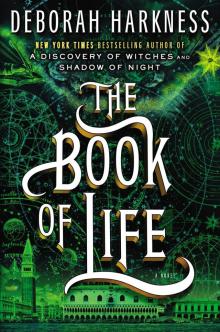 The Book of Life
The Book of Life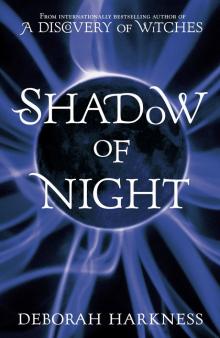 Shadow of Night
Shadow of Night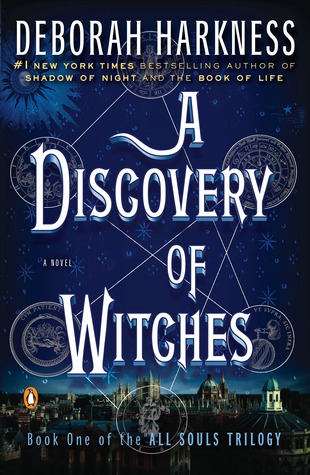 A Discovery of Witches
A Discovery of Witches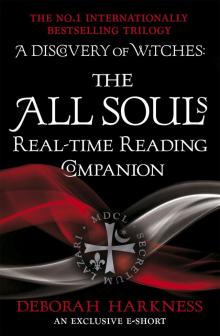 The All Souls Real-Time Reading Companion
The All Souls Real-Time Reading Companion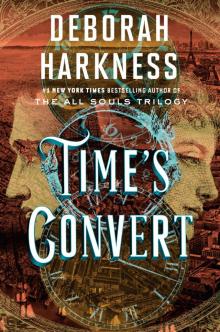 Time's Convert
Time's Convert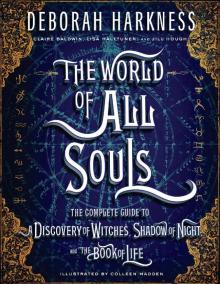 The World of All Souls
The World of All Souls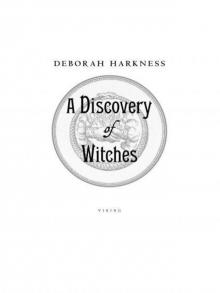 A Discovery of Witches: A Novel (All Souls Trilogy)
A Discovery of Witches: A Novel (All Souls Trilogy) Shadow of Night: A Novel
Shadow of Night: A Novel